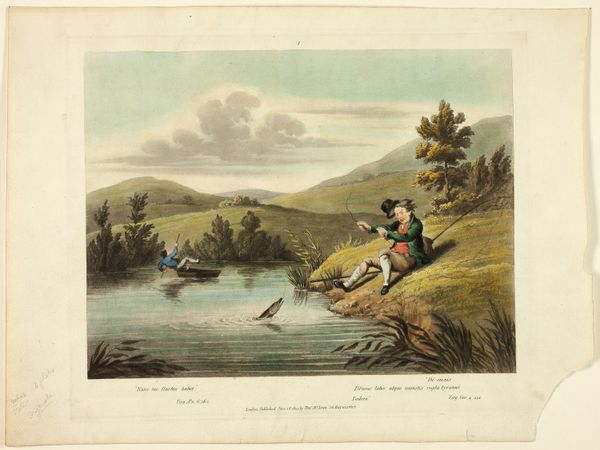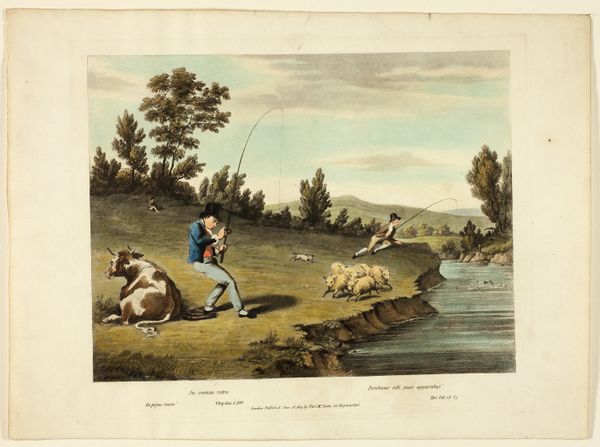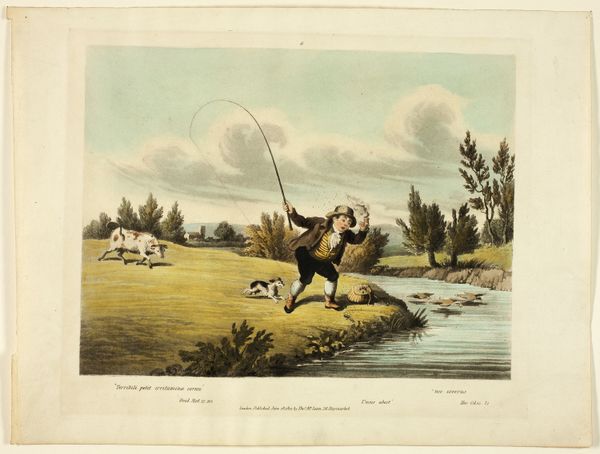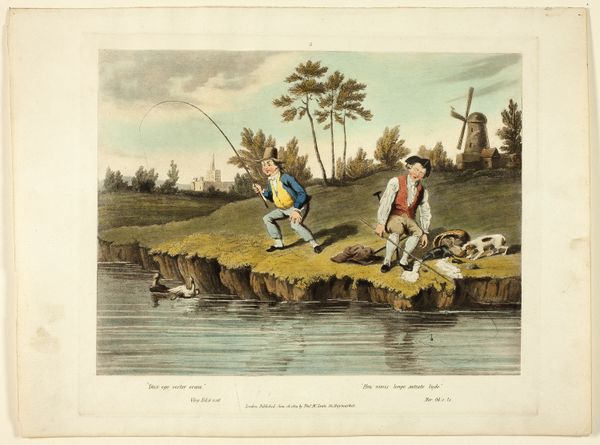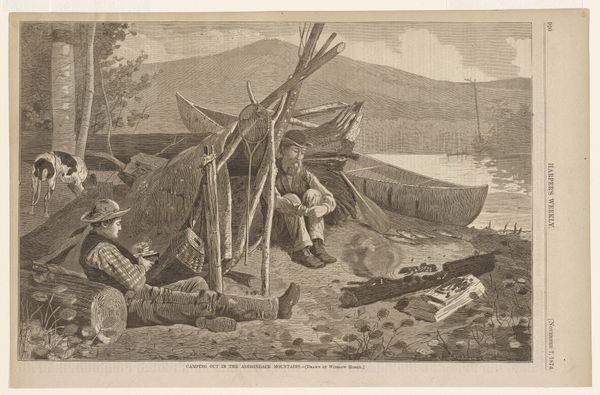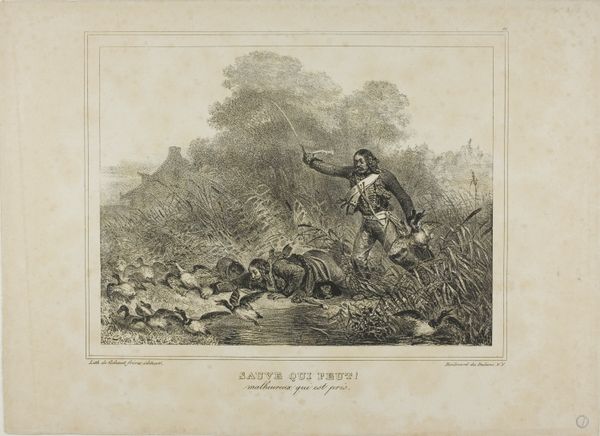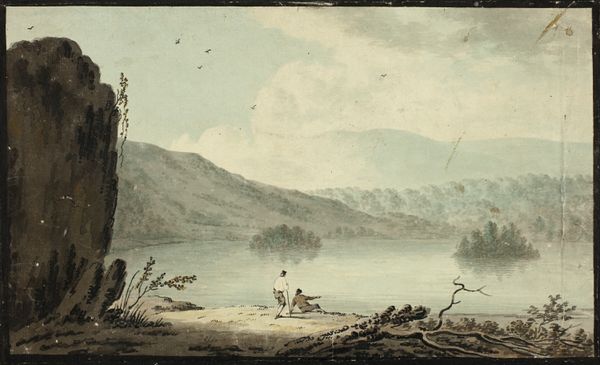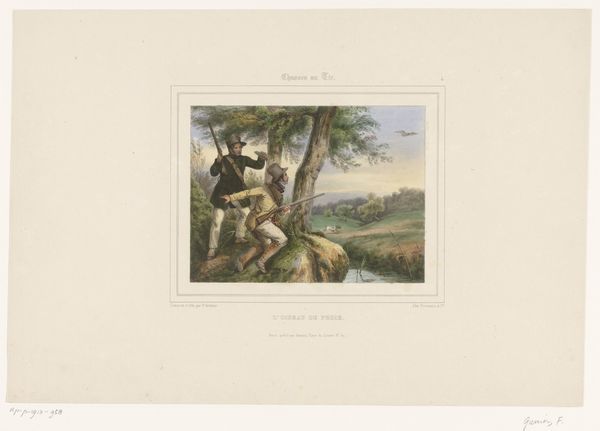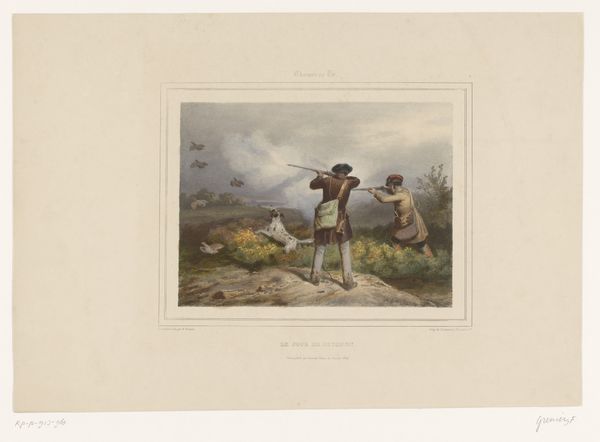
drawing, print, etching, paper, watercolor
#
drawing
# print
#
etching
#
landscape
#
figuration
#
paper
#
watercolor
#
coloured pencil
#
romanticism
#
genre-painting
Dimensions: 202 × 262 mm (image); 235 × 285 mm (plate); 268 × 360 mm (sheet)
Copyright: Public Domain
Curator: Let's discuss "Delights of Fishing," a print by Charles Turner, dating back to 1823. Turner employed etching and watercolor to craft this scene. What springs to mind as you observe this artwork? Editor: My first thought? A day out of Dickens! There's a light touch here, almost theatrical, with these youngsters so absorbed in their angling—or rather, their creative approach to fishing. It feels like a whimsical stage set, doesn't it? Curator: Whimsical indeed! Focusing on materiality, Turner's choice of printmaking allowed for wider dissemination. These were often hand-colored, demonstrating the artistic labor even in what we might casually consider a reproduction. Consider the economics; prints brought art to a burgeoning middle class. Editor: Absolutely. And yet, the color application, like a whisper of pigment, elevates it. Makes you wonder, doesn't it, about the unseen hands involved in production? Were they whistling while they worked, imbuing the image with more delight? Curator: Exactly! The means of production matter. Each impression is slightly unique depending on coloring variations, linking high art with the realities of labor. The fishing itself becomes a form of early capitalist activity: attempting to extract value from the natural world. Editor: Well, if the gleam in those youngsters' eyes is anything to go by, they certainly perceive it that way. Perhaps the ‘delights’ are intertwined with a competitive spirit? Or maybe I'm overthinking boyhood adventures, which is so easily done. Curator: Not at all. And look closely; that's not just recreational angling. They seem to have combined fishing with net fishing, displaying ingenuity... or unsportsmanlike practices! This approach questions the social rules even within supposedly innocent rural pastimes. Editor: A delightful transgression! Now, to think of Turner, sequestered in his studio, translating a slice of British riverside life... he surely intended this as a snapshot of joyous social interaction? He was a master of mezzotint after all. It's a shame that process got replaced later by steel. Curator: The move from copper to steel printing plates reflects further industrialization impacting art's production. We begin to move into more homogenous forms of image reproduction and experience art more passively. Editor: Yes, such a contrast to this active scene here where labor and enjoyment mingle in such a beguiling way. I am glad we fished around it a bit longer. Curator: Agreed. Looking closely at Turner's process gave a richer understanding to this simple snapshot.
Comments
No comments
Be the first to comment and join the conversation on the ultimate creative platform.

